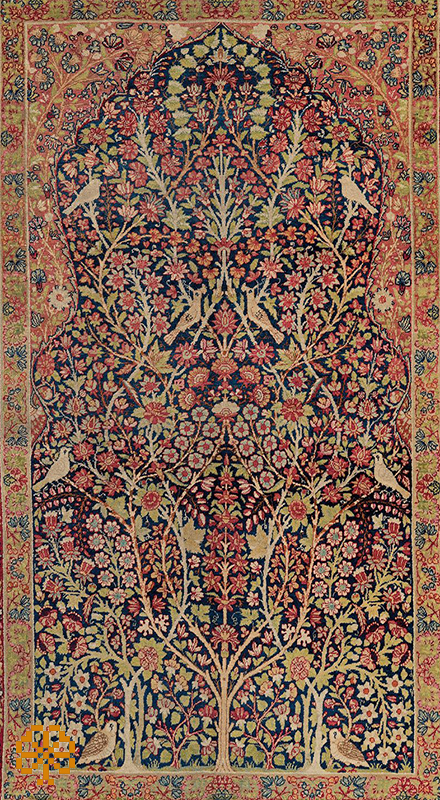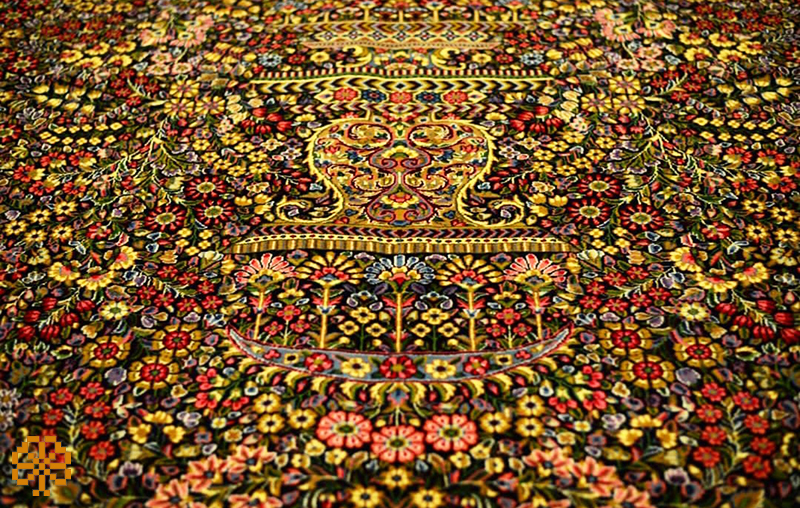Kerman handmade carpet | Investigation and recognition of its appearance and technical characteristics

Kerman handmade carpet is an Iranian carpet that is famous in the world for successfully combining design and color and having a variety of color combinations, and there are many examples in Persian literature praising it.
Kerman province is one of the vast provinces of Iran in the southeast of the country, which is also considered as one of the most important and historical provinces of Iran, and carpets, kilims, jajims and 2 hand-woven products of Kerman province.
Kerman has a long history in the carpet weaving industry, but there is no evidence that this industry existed in this city before the tenth century AH.
Of course, due to the greatness and glory of carpets in the spiritual period of Kerman, researchers have a long history of carpets in Kerman. According to some documents, Kerman was one of the main centers of carpet weaving in the 17th century, and in the late 19th century, when carpet weaving flourished in Iran, Kerman once again introduced itself as a producer of one of the most luxurious Iranian carpets. In recent years, Kerman carpets, like some carpet weaving areas in the country, have had a downward trend and no longer have the former grandeur.
In the following and in this article about Farahan carpet, we will examine the appearance and technical characteristics of Kerman handmade carpet.
Design and motifs of Kerman handmade carpets
Kerman handmade carpets can be considered in the category of naturalistic carpets, full of work and full use of small patterns throughout the carpet. Afshan and…, which is the famous vase design, is one of the masterpieces of Safavid period carpets.
Also, various flower designs have an important part of the designs in Kerman region, which is taken from non-Iranian decorative arts.
Among the pioneers of contemporary handicraft design in Kerman are: Shahrokhi family, Kazem Rad, Shokrallah Pak Gohar, Reza Khan Zand, Mahmoud Arjomand and…
Read more:The greatest carpet designers Introducing 10 main figures
What is the color of Kerman handmade carpets?
On average, between 15 and 20 colors are used in Kerman handmade carpets, which distinguishes the colors close to nature of these carpets from the carpets of other regions.
Therefore, the most important colors of Kerman handmade carpets can be considered as dark and light lacquer colors, beige, copper, jujube, dark and light blue, crimson, pink, dark and light greens, etc.
Technical features of Kerman handmade carpets
Kerman handmade carpet is woven in two weaves (in the past and in some cases three weaves) and with Persian knot (asymmetrical), but in some tribes such as Afshar, carpet weaving may be done with Turkish knot. In Kerman handmade carpet, Wool is used as lint and cotton is used for warp and weft and silk is rarely seen in carpet weaving. Also, Kerman handmade carpets are produced in different dimensions.
Persian weaving, the use of vertical beams and the use of connected headboards are other features of Kerman hand-woven carpets.
Among the great old producers of Kerman handmade carpets are: Ahmad Yazdanpanah known as Dilamghani, Mohammad Arjmand Kermani nicknamed the Sultan of Kerman carpet, Rashid Farokhi brothers, Ajdari brothers…
Abolhadi, Fathi, Nasiri and Vaziri are also the most important current producers of urban carpets in Kerman province.
Ravar is one of the most important carpet weaving areas in Kerman province, which despite its low production, is very important in terms of quality and quality of carpet texture, and its carpets are very famous in domestic and foreign markets, so much so that many of the best handmade carpets Kerman is known as Ravar Carpet. Rafsanjan, Sirjan, Shahrbabak and 2 other carpet weaving areas of Kerman province.






